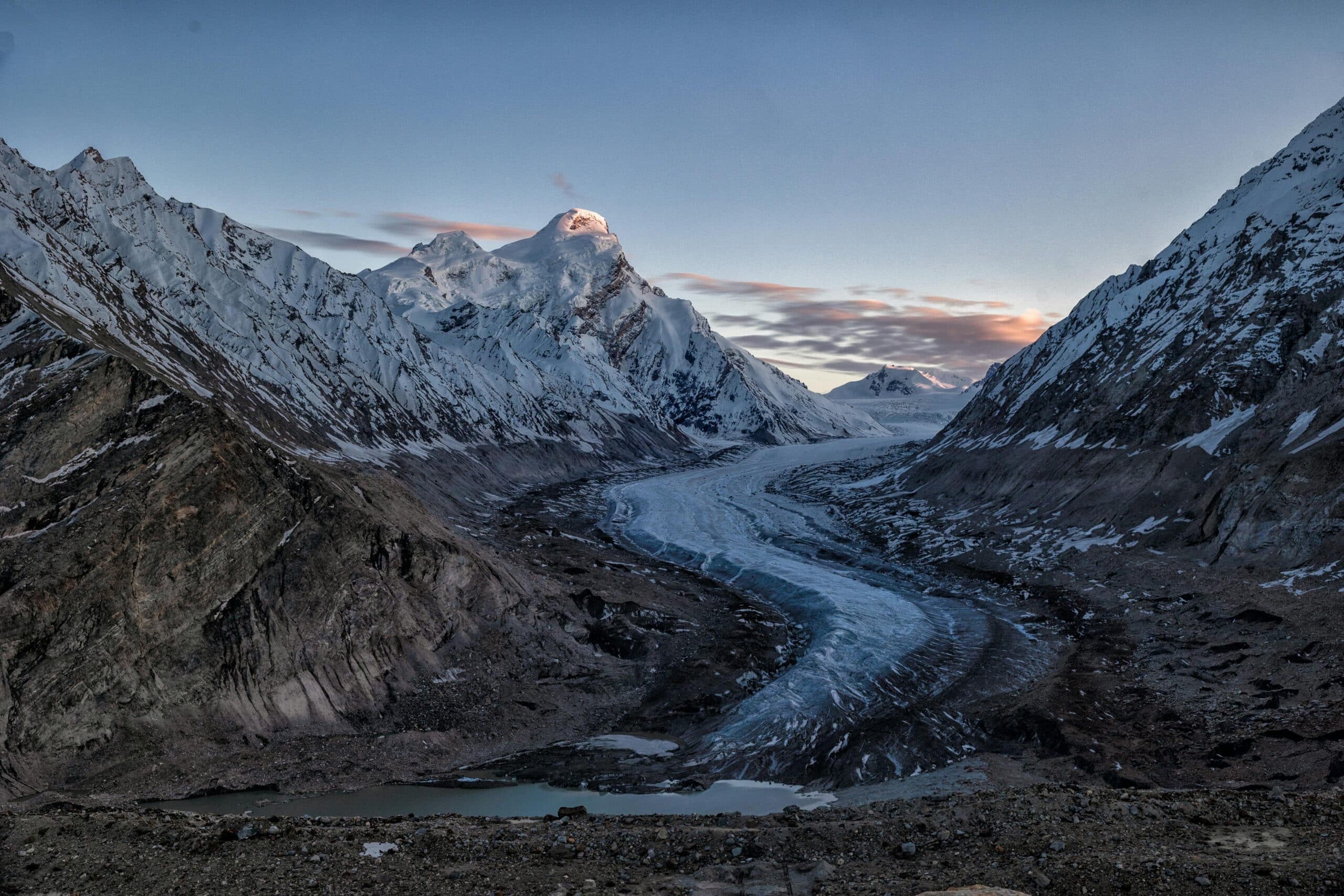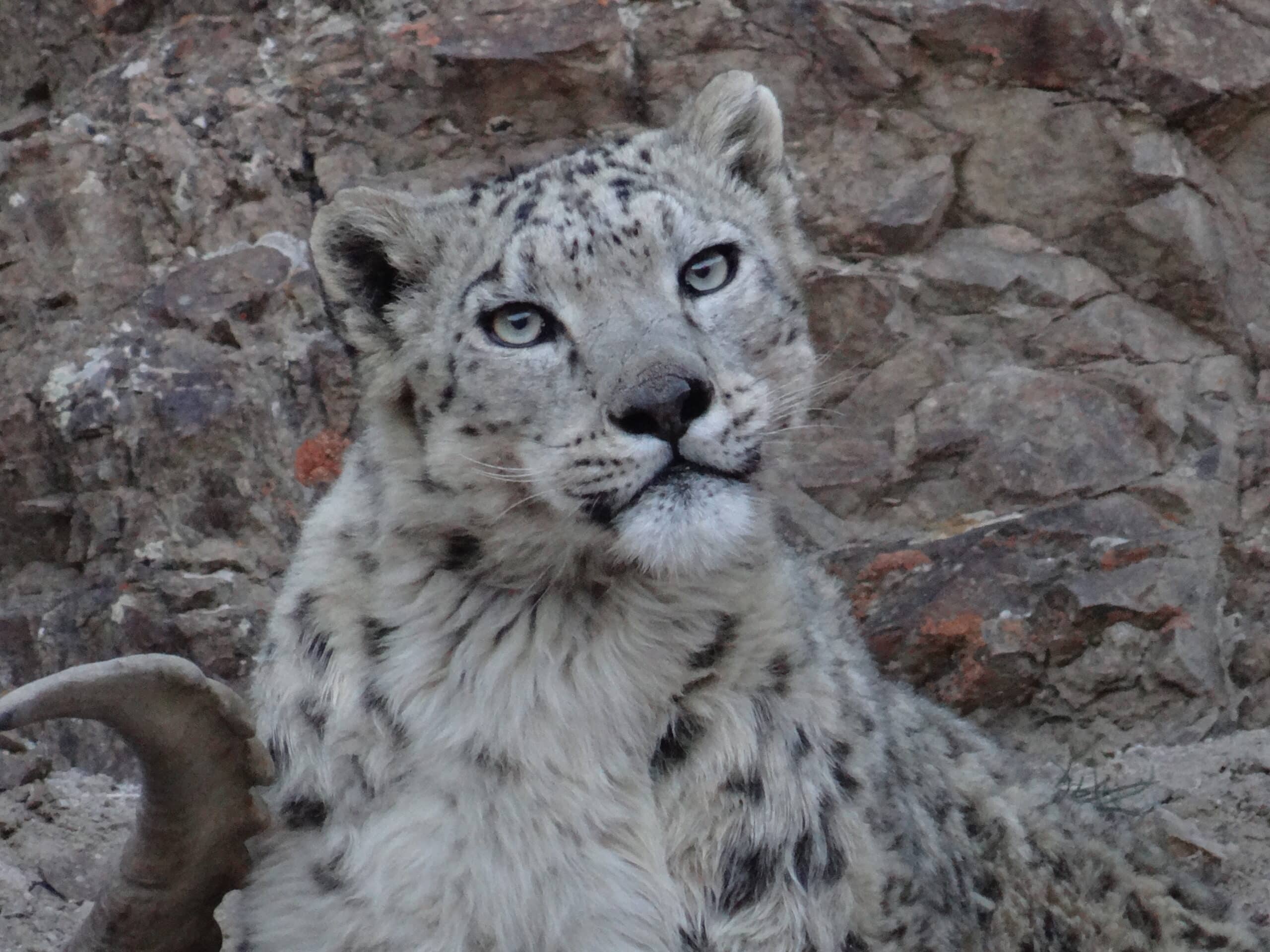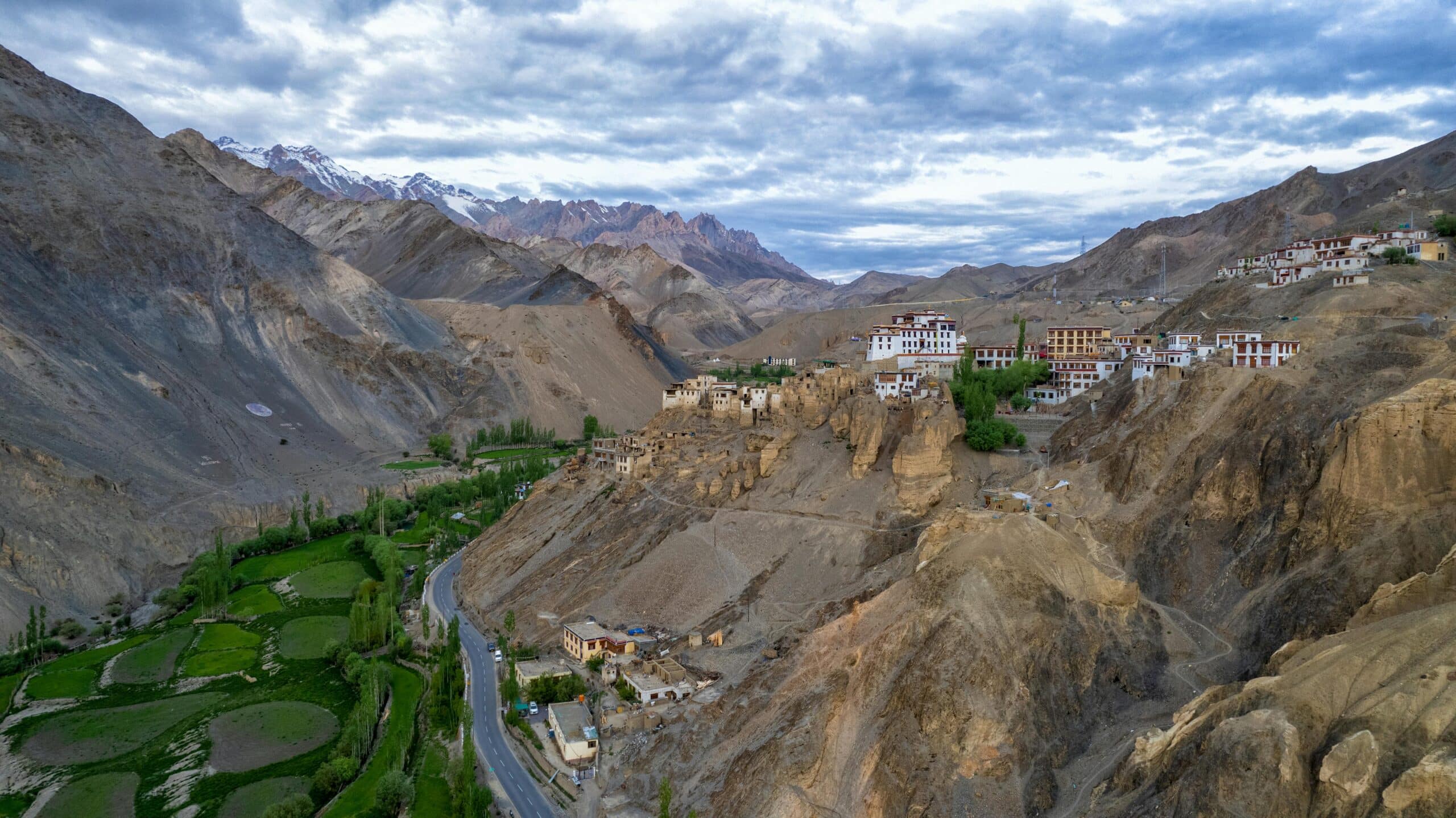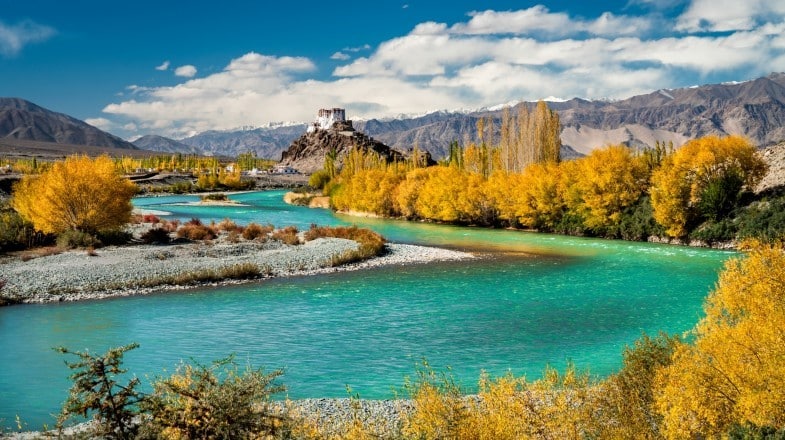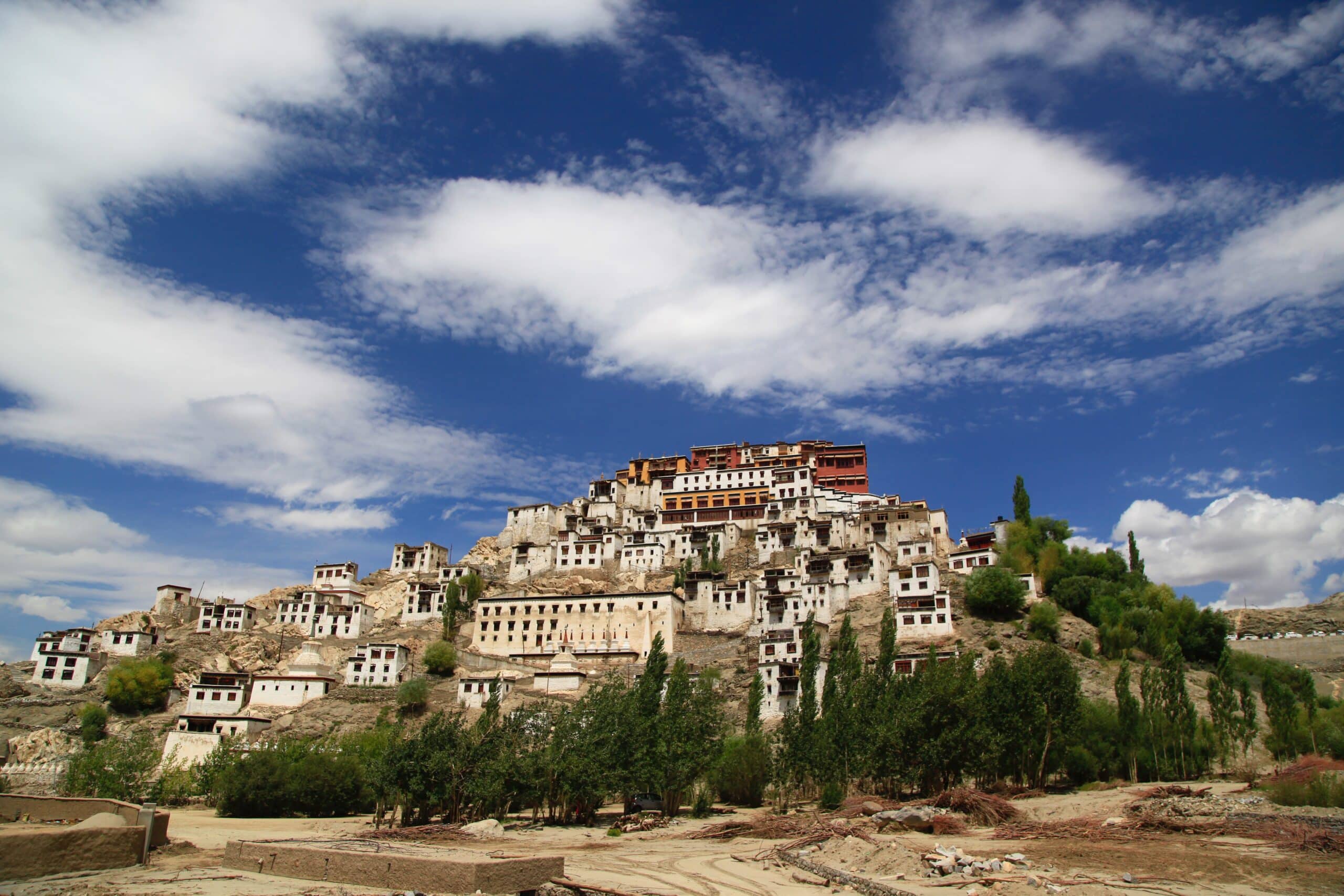- Transport Included
- Meals Included
- Hotel Included
- Pickup/ Drop Point: Srinagar/ Leh
Journey through roof of the world
The Thrilling overland drive from Kashmir to Ladakh
Journey through roof of the World
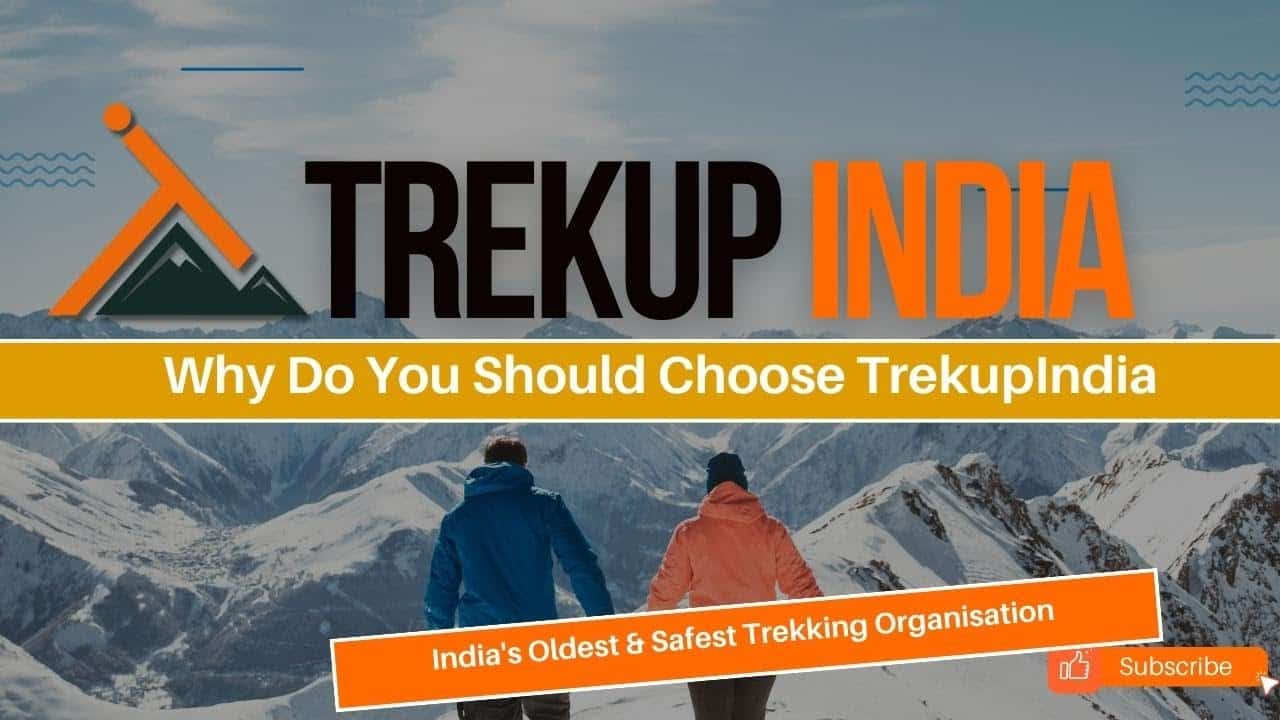
Once a lifetime experience of overland driving through the roof of the world, this pretty journey starts from Srinagar in J&K all the way till Ladakh, it’s one of the most popular places in India, the charming Srinagar offers mesmerizing Shikhara Ride on Dal Lake, the heartwarming and home welcoming stay experience in the houseboat, driving through Roof of the world to Ladakh via Kargil. Ladakh which has its name of frame for having the highest motor-accessible mountain passes on the planet. Visitors from around the globe visit this place and are captivated by its stunning beauty. The snow-covered landscape creates the sensation that you are in Heaven. It is a beautiful mountain pass with frozen rivers, glaciers, and monasteries. The inhabitants of this region follow Buddhism, as well as Tibetan traditions.
Day Wise Detailed Itinerary
Day 01: Arrival in Srinagar (5200 Ft.) and Half-Day Sightseeing
Today on arrival at Srinagar Airport, met and received by the company representative/driver and transferred to the booked houseboat, enjoyed a hot lunch (on a direct payment basis), Afternoon experienced a Shikara boat ride along the lake, and then go to explore the Nishat Garden. The beautiful garden is situated on the eastern end of the beautiful Dal Lake and amid the stunning Zabarwan Mountains. The stunning garden is full of pure enjoyment for nature enthusiasts, family vacationers, and romantic couples since it gives stunning sights and unforgettable moments. Chashme the Shahi Garden, apart of the Mughal Gardens, is a must-see in Srinagar. The natural springs of this famous attraction in Srinagar, rest of the evening at leisure, free for one’s own activities.
Overnight stay at Houseboat Meal: Dinner Only
Day 02: Srinagar (5200 ft.) -Kargil (8780 Ft.) by surface 205 Kms approx 7-8 Hrs
Morning enjoy delicious breakfast on the houseboat and thereafter we will proceed our drive to Kargil via Sonmarg crossing Zodjilla pass, Drass Village the 2nd coldest inhabited place in the world, on reaching Kargil we will visit War Memorial Hall and Museum, Situated in Dras, approximately 5 kilometers away from Kargil town in the Union Territory of Ladakh, India, the Kargil War Memorial, also called the Vijaypath, holds great importance. Here is essential information about this memorial dedicated to the Kargil War. The rest of the evening at leisure free for your own activities.
Overnight stay at Houseboat Meal: Breakfast & Dinner Only
Day 03: Kargil (8750 Ft.) -Leh (11500 Ft.) by surface 220 Kms approx 7 Hrs
Today morning enjoy breakfast at the accommodation and thereafter we proceed our drive towards Leh crossing Fotula pass at 4108 Meters, we will visit Lamayuru Monastery,- one of the oldest Buddhist monasteries in the region, further we continue our drive to Alchi to visit beautiful monastery setting examples of traditional Tibetan architecture. The solid rectangular and square buildings with flat roofs decorated with intricate murals are icons of Buddhist architecture and art in the Himalayan region. In the course of a scenic landscape, we come to the confluence of the Indus and the Zanskar Rivers; and witness the wonder of Magnetic Hill that defies the laws of gravity. It is observed that when a car is parked in neutral gear on this metal road, it appears to slide upwards and then downwards. The next item on the list of sights is the magnificent Gurudwara Pathar Sahib. In the Himalayas, the structure was constructed through the efforts of Lamas in Leh in 1517 to commemorate visiting Guru Nanak Dev – the creator of the Sikh faith. The Hall of Fame was built through The Indian Army to commemorate the sacrifices of soldiers in the Indo-Pak conflicts. Arrive in Leh in the evening, check into the booked accommodation
Overnight stay in Hotel Meals Breakfast and Dinner Only
Day 04: In Leh - Exploration and acclimatization
Today, we have a leisure day in Leh for acclimatization, letting your body get used to the climate and altitude of Ladakh, in the afternoon enjoy lunch on direct pay and thereafter we will proceed to visit Shanti Stupa, a Buddhist white domes stupa on a hill in Changspa. The structure was constructed in 1991 by Japanese Buddhist Bhikshu Gyomyo Nakamura as part of the Peace Pagoda mission. Later we will drive to visit Leh Palace and in the evening we will explore the local Leh market, mingle with locals, taste local cuisine, buy locals, and thereafter walk back to your hotel followed by dinner.
Overnight stay in Hotel Meals Breakfast and Dinner Only
Day 05: Leh (11562 ft.) -Nubra Valley (11000 Ft.) surface 125 Kms approx. 5-6hrs via Khardungla Pass (18360 ft.)
After breakfast, take an amazing journey to Nubra Valley crossing Khardungla Pass which is 18360 feet. On one of the highest motorable roads in the world, later in the afternoon, we will stroll around the Hunder village, which is famous by its dunes of sand, which sit beautifully amidst snow-capped mountains and lush valleys, and rivers. It is an area where you can discover dunes of sand and rivers. mountains. We will visit to Diskit Gompa founded by Lama Sherab Zangpo in around 1420 AD under the time of King Dragspa. Around 100 monks live in the Gompa which is a part of Thikse Monastery. After that, travel through the Hunder Sand dunes to meet and engage with the camel herders. We will have interaction with them, and learn about their daily routine. Then we’ll enjoy and go on a double hump camel ride (At additional cost). The remainder of the evening will be at leisure, time to do your own leisure activities.
Overnight stay in the Camps / Hotel Meal: Breakfast & Dinner
Day 06: Nubra Valley (11000 Ft.)– Pengong Lake (14,270 Ft.) via Shyok by surface 245 Kms approx 6-7 Hrs
Today we start early from Nubra Valley towards Pengong Tso via Shyok (only when the route is cleared and accessible), in this journey, we will enjoy the incredible Himalayan landscape, evening reaching Pangong Lake, located on the border between India and China, it is a visually pleasing destination with its numerous watercolors. We check into our beautiful camps followed by dinner, at night enjoy the sparkling and shooting stars in a clear sky, this will be of lifetime experience.
Overnight stay in the Camps / Hotel Meal: Breakfast & Dinner
Day 07: Pangong - Leh by surface 225 Kms approx 6-7 Hrs
Enjoy the morning sunrise in Pengong Lake, have a delicious breakfast and thereafter we return to Leh following the same route that passes via Changla La (pass) (17388 Ft), on the way we see Sindhu Ghat, famous for Sindhu Darshan Festival of Ladakh, on the banks of Indus River. Enroute to Leh we will visit Hemis Monastery, 40 kms to Leh’s southeast, founded during the reign of Emperor Singge Namgyal, in 1672 AD. The monastery is adorned with stunning art and a Statue of Lord Buddha, which are the important highlights. Thereafter we will also visit Thikse Gompa, located in a part of the Yellow Hat (Gelugpa) sect. The style of the largest temple in central Ladakh resembles the Potala Palace in Lhasa, Tibet. The complex, which spans 12 stories, consists of objects related to Buddhist art, like Thangka-inspired paintings, stupas, and statues of swords as well as other things. The building also houses the monastery. Evening on reaching Leh we check into our booked accommodation, evening at leisure, free for your own accommodation.
Overnight stay at Hotel Meal: Breakfast & Dinner Only
Day 08: Departure from Leh
Today, well in time we will be transferred to Leh airport to board our flight back to home.No Accommodation Meals: Breakfast Only
Expert Guidance
Embarking on a road trip from Srinagar to Ladakh through the towering mountain ranges of the world’s rooftop is an exhilarating adventure that promises breathtaking vistas, immersive cultural encounters, and the rush of conquering lofty peaks. To ensure a well-planned journey, here’s some valuable guidance from Trekup India experts.
- Route Planning: Trekup India has used the most frequently used path is the Srinagar-Leh Highway (NH1), which takes you through picturesque locations such as Sonamarg, Drass, and Kargil. Stay mindful of any potential roadblocks or closures caused by weather conditions or maintenance work.
- Acclimatization: Allow your body to adjust to the higher elevation by gradually increasing your altitude exposure. This will help minimize the risk of altitude sickness. If you’re traveling from a lower altitude, consider spending a few days in Manali or similar high-altitude locations before proceeding to Ladakh. This will give your body time to acclimatize properly. Be mindful of the potential onset of acute mountain sickness (AMS) manifesting as headaches, queasiness, dizziness, or difficulty breathing. If such symptoms persist or intensify, promptly descend to a lower elevation to alleviate and address the condition.
- Vehicle: Before embarking on your journey, make sure your vehicle is in top shape, particularly if you’ll be driving your own car or motorcycle. It’s a good idea to have a spare tire, extra fuel, and the tools needed for basic repairs. Additionally, consider the terrain you’ll be driving on and how a high-clearance vehicle might be beneficial.
- Packing Essentials: When preparing for your adventure, don’t forget to bring along the essentials to ensure a safe and comfortable journey. These include warm and sturdy clothing, sunscreen, sunglasses, a first aid kit, and an adequate supply of food and water. Additionally, be sure to pack any necessary medications, particularly if you’re susceptible to altitude sickness.
- Permits: Before embarking on your journey, ensure that you have obtained the necessary permits, particularly for regions like Rohtang Pass, which require specific permits for vehicles not registered in Himachal Pradesh Nubra Valley and Pangong in Ladakh.
- Weather Awareness: Stay alert to changing weather patterns, particularly in areas with mountains. It’s important to have rain gear and warm clothes with you, even if you’re journeying in the summer season.
- Road Conditions: Expect to encounter rough and occasionally demanding road conditions, which may involve areas without pavement, steep inclines and declines, and narrow paths. Exercise caution while driving and remain aware of approaching vehicles, particularly on narrow segments.
- Local Culture and Custom: When journeying through various regions, it’s essential to embrace and respect the unique cultural practices and traditions of the local communities. Make a conscious effort to minimize your impact on the environment by avoiding littering and being mindful of your surroundings.
- Photography: When taking pictures, make sure to capture the stunning scenery and views during your journey, but also remember to be considerate of the cultural and religious sensitivities towards photography, particularly in sacred places. With locals take permission first and then click the photos, do not randomly click anyone’s photo anywhere.
- Travel Insurance: Invest in a safety net for your adventure: Medical emergency and evacuation coverage is a wise consideration for those venturing into remote regions such as Ladakh, through travel insurance. Hence Trekup India recommends all our travellers to get their travel insurance.
Best Time to Visit Drive from Kashmir to Ladakh
1. Summer (May to September):
- This is the peak tourist season in Ladakh when the weather is relatively mild and roads are accessible.
- Temperatures during the day range from 15°C to 30°C (59°F to 86°F) in lower-altitude areas like Leh, making it comfortable for sightseeing and outdoor activities.
- The high mountain passes such as Khardung La, Chang La, and Tanglang La are open during this time, allowing for road trips and adventures.
- The famous Hemis Festival usually takes place in June or July, offering visitors a chance to witness traditional music, dance, and rituals.
2. Spring (March to April):
- Spring marks the beginning of the tourist season as temperatures start to rise and the snow begins to melt.
- While temperatures are still cold, ranging from 5°C to 20°C (41°F to 68°F), it’s possible to visit Ladakh during this time if you’re prepared for chilly weather.
- Many trekking routes begin in April, making it an excellent time for adventurous travellers who want to explore the region on foot.
3. Autumn (October to November):
- Autumn offers pleasant weather with clear skies and fewer tourists than summer.
- Temperatures start to drop, especially towards the end of November, but it’s still an excellent time to visit for those who want to avoid the crowds.
- The landscape takes on vibrant hues of gold and red as the vegetation changes colours, offering stunning photo opportunities.
4. Winter (December to February):
- Winter in Ladakh is frigid, with temperatures plummeting below freezing, especially in higher-altitude areas.
- Most road routes, including the famous Manali-Leh Highway and Srinagar-Leh Highway, are closed due to heavy snowfall, making Ladakh inaccessible.
- However, winter sports enthusiasts and adventure seekers can enjoy ice skating, snowboarding, and Chadar Trek (trekking on the frozen Zanskar River).
Why Your Trip is Safe & Secure with Us?
Professional & Experienced Team: Trekup India has professional and highly Experienced Tour Experts to assist and guide you for better tour planning, our yatra experts possess extensive knowledge of the destination, local traditions, and potential hazards. With our expertise, you will enjoy a seamless and secure Trip.
Trekup India Adventures Pvt. Ltd. is a reputable tour operators, who prioritize safety by implementing well-defined protocols to minimize potential hazards during excursions. These measures may encompass routine safety briefings, emergency response plans, and thorough risk evaluations for various activities.
Certifications & Affiliations: Trekup India holds all valid licenses, certificates, and affiliations and is authorized by the Government to Uttarakhand to operate Tours in India. We are also registered with the Uttarakhand Tourism Board and are affiliated with the Indian Mountaineering Foundation (IMF) and Adventure Tour Operators Association of India (ATOAI), Trekup India compliance with all rules and guidelines established by governing bodies.
Certified Accommodation and Transport: Trekup India is a trusted and Reliable tour operator with huge collaboration with established accommodations to ensure comfortable stays and guaranteed reservations, we own a fleet of transportation to provide safe and hassle-free drives.
Seasoned, Experienced Chauffeurs: Trekup India provides experienced licensed drivers on all the trip with a minimum of 5 years of driving experience in the respective tour region..
Seasoned, Experienced Chauffeurs: Trekup India provides experienced licensed drivers on all the trip with a minimum of 5 years of driving experience in the respective tour region..
24×7 Hour Support: Trekup India provides uninterrupted support to its travelers, giving them the peace of mind that they can reach out for help at any time, whether it’s an emergency or an unforeseen circumstance, day or night, throughout their journey.
What should you pack for the Trip ?
Clothing:
- Lightweight, moisture-wicking t-shirts for warmer temperatures during the day.
- Long-sleeved shirts and trekking pants for sun protection and cooler evenings.
- Insulating layers such as fleece jackets or down jackets for cold nights and high altitudes.
- Waterproof and windproof jacket and pants to shield against rain and cold winds.
- Quick-drying underwear and socks to keep you comfortable during long treks.
- Sturdy and waterproof hiking boots with ankle support for trekking on rugged terrain.
- Sun hat with a wide brim and sunglasses for sun protection at high altitudes.
Accessories:
- Backpack with a rain cover for carrying essentials during treks.
- Sleeping bag suitable for the temperatures expected during your trek.
- Trekking poles for stability and support on uneven trails.
- Headlamp or flashlight with spare batteries for nighttime use.
- Use a Water bottle or bladder to stay hydrated during treks.
- Buff or scarf for warmth and protection from dust and wind.
- Camera or smartphone with a power bank for capturing memories.
Health and Personal Care:
- Comprehensive first aid kit includes bandages, antiseptic wipes, pain relievers, and medication for altitude sickness.
- Prescription medications and copies of prescriptions.
- Insect repellent to ward off mosquitoes and other insects.
- Personal toiletries and hygiene products.
- Lip balm and moisturizer to prevent dryness in the mountain air.
- Hand sanitizer or wet wipes for cleanliness during treks.
Miscellaneous Items:
- Local maps, guidebooks, or GPS devices for navigation during treks.
- Reusable water-resistant bags for organizing and protecting your belongings.
- High-energy snacks like nuts, dried fruits, and energy bars for quick energy boosts.
- Travel adapter and portable charger for electronics.
- Cash in Indian Rupees for purchases in remote areas where ATMs are unavailable.
- Travel insurance documents and emergency contact information.
Important Documents:
- Valid ID proof and necessary permits for trekking in Ladakh and Kashmir.
- Printed copies of your trek itinerary, accommodation reservations, and emergency contact numbers.
- Travel insurance details and medical history.
Cost Inclusion
- 01 Night accommodation Houseboat in Srinagar on double sharing basis
- 05 Nights’ accommodation in a hotel as per the itinerary on double shared basis
- 01 Night accommodation in a Swiss camp in Pangong Lake on double sharing basis
- Meals served during the trip will be on a MAP basis i.e. Breakfast and Dinner Only (Starting with Dinner on day 01 and ending with Breakfast on Day 08) all meals will be on a fixed base menu.
- Transportation as per the itinerary from Day 01 till Day 08 (non-ac) in the mountains.
- Environmental Fee of Ladakh
- Inner Line Permits for traveling to Nubra Valley and Pengong Lake
- All Fuel Expenses for vehicle
- Driver daily allowance
- All Toll Tax, Road Tax and Parking Fee is included
- 24×7 hours communication services
Cost Exclusion
- GST 5% (it is Mandatory)
- Any insurance (Trekup India recommends each trekker to get insurance)
- Any Meals/accommodation beside the itinerary or not mentioned in the program.
- Any Bus / Airfare to/from trek start/end point
- Personal Medical expenses do carry your medication.
- Any personal services such as Laundry, phone calls, liquors, mineral water, etc.
- Any still / video camera fee
- Any Entrance fee Monuments, Monasteries, Museums, Temples – Pay directly on the spot.
- Mules or porter charges to carry private baggage (Offload Charges for bag 700 per day, per bag. Note: Bag weight should not be more than 10 kg.
- Any emergency evacuation charges
- Any services that are not mentioned in the cost inclusion section.
How To Reach Srinagar?
Getting to Srinagar, the capital of Jammu and Kashmir (J&K), is possible using different means of transportation. Here is a guide on how to reach Srinagar:
By Air: Srinagar can be easily reached by air via Sheikh-ul-Alam International Airport, also known as Srinagar Airport (SXR). This airport is well-connected to major Indian cities like Delhi, Mumbai, Bangalore, and Kolkata, as well as some international destinations. Several airlines operate regular flights to Srinagar, making air travel the quickest and most convenient way to get there.
By Train: Srinagar is not directly accessible by train, but the nearest railhead is Jammu Tawi Railway Station, located in Jammu city. From there, visitors can opt for a taxi or bus to reach Srinagar, which is around 7-8 hours away. Jammu, on the other hand, has good rail connectivity with major cities across India.
By Road: Srinagar can be reached by road from several North Indian cities, albeit with a lengthy journey time due to rugged terrain and potential roadblocks. The National Highway 44 (NH44) links Srinagar to Jammu, which in turn connects to the rest of India’s road network. Moreover, Srinagar is connected to cities such as Chandigarh, Delhi, and Amritsar through the NH44.
Srinagar is accessible by private taxis and car rentals, which are preferred by travelers from nearby areas like Jammu, Katra, or Leh. These transportation options offer flexibility and convenience but are relatively more expensive compared to other modes of transport.
Reviews
Trustindex verifies that the original source of the review is Google. I have done kedarkanta trekk with trekkup India, one who love snow,,it is must recommended place to trekk, team trekkup( trekk leaders Vivek, nilesh, maninder) very co operative, facility provided by them is next level, if I tell about the place, lot of awesome views of mighty Himalayas, adverse extreme living experience in tents with night snowfall, clear sky with freezing temperatures at night, more people to make friends and sharing life experiences and view, one small suggestion, before doing this trekk you should start doing exercises atleast 10 days before this trekk, this will helps you lot,Trustindex verifies that the original source of the review is Google. This was my very first experience in snow. Trekup India has done a phenomenal job for making all the arrangements. The journey is really physically demanding, but the view is a once in a lifetime experience.Trustindex verifies that the original source of the review is Google. To walk on slippery ice and fall umpteen times, to be hungry and thirsty for hours, to experience sub-zero temperature etc. was not easy. While the trek may not be easy, the experience was exquisite and virgin. The thrill of reaching the peak pumped me up and its going to keep me energized / spirited. It happened only because of Trek up India (Our Team leaders Manindar Sing and Neelesh Bro.... Thank you Trek up India).Trustindex verifies that the original source of the review is Google. Joined them for kedarkantha trek and it was amazing experience. ✅Food is amazing at all the camps ✅They have best location for their camps ✅Staff and trek leaders (Nilesh) are amazing, trained and helpful. ✅Their homestay in sankari village is beautiful. In short, worth every penny experience.💯Trustindex verifies that the original source of the review is Google. It was a wonderful experience, starting from stay to food to trek leader Nilesh, Vivek, Maninder, Had thrilling and breathing taking experience Team was very professional and expert in there task Full mark's to the team Waiting for more treks from the trekup India Good luck 🤞Trustindex verifies that the original source of the review is Google. Osm first time experience..food was amazing and trek guides were very supportiveTrustindex verifies that the original source of the review is Google. Very goodTrustindex verifies that the original source of the review is Google.
FAQs Abou the trip
What are the different ways to travel from Srinagar to Ladakh?
Road Trip: Via NH1D, also known as the Srinagar-Leh Highway, offers stunning scenic views but can be challenging due to high altitude and rough terrain. Bus: Regular bus services operate between Srinagar and Leh, providing a budget-friendly option for travelers. Taxi/Car Rental: Private taxis or car rentals are available for a more comfortable and customizable journey.
How long does it take to travel from Srinagar to Ladakh?
Typically takes around 2 days with an overnight stop in Kargil.
What is the best time to travel from Srinagar to Ladakh?
The best time is during the summer months (June to September) when the roads are open and weather conditions are favorable.
Are there any permits required for travel to Ladakh?
Yes, travelers need to obtain an Inner Line Permit (ILP) or Protected Area Permit (PAP) depending on their nationality and the areas they plan to visit. These permits are obtainable online or from designated authorities.
What should I pack for the journey?
Warm clothing, especially for chilly nights and high altitudes. Sunscreen, sunglasses, and a hat to protect against the harsh sun. Medications for altitude sickness and other common ailments. Snacks and water for the journey, as amenities may be limited in remote areas. A camera to capture the breathtaking landscapes.
Are there any health risks to consider during the journey?
Altitude sickness is a common concern due to the high elevation, so travelers should acclimatize gradually and stay hydrated. Road travel can be bumpy and winding, potentially causing motion sickness in some individuals.
Is it safe to travel independently, or should I join a tour group?
Both options are viable depending on your preferences and comfort level. Independent travel allows for more flexibility, while joining a tour group can provide added support and guidance, especially for first-time visitors.
What are some must-see attractions along the Srinagar to Ladakh route?
Sonamarg, Zoji La Pass, Drass War Memorial, Kargil, Lamayuru Monastery, Magnetic Hill, and the confluence of the Indus and Zanskar rivers are some noteworthy stops along the way.
How can I stay informed about road conditions and travel updates?
Check with local authorities or online forums for the latest updates on road conditions, weather forecasts, and travel advisories like Trekup India. Additionally, carry a mobile phone with a reliable network connection for communication during the journey.
Does Pre paid Sim cards Works in J&K and Ladakh?
Pre Paid Connections does works in J&K and in Ladakh, one must have Post paid Connections.

